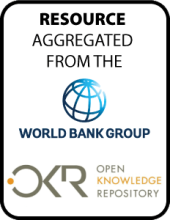/ library resources
Showing items 1 through 9 of 652.The demand for agricultural products (food, feed, fibre, and biomass for other purposes) produced in Sub-Saharan Africa (SSA) will increase for the coming decades. In addition, the global climate change will largely impact on the agricultural sector in Sub-Saharan Africa.
Land is serving as a basis for the production of food, feed, fibres, wood, bio-energy, for biodiversity, recreation and many other goods and services ecosystems provide.
Sustainable economic development is essential for hundreds of millions of poor households in rural areas. This book represents a merger of environmental science and rural development economics. It elucidates the linkage between rational choice theory and theories on land use change.
Few longitudinal studies link agricultural biodiversity, land use and food access in rural landscapes. In this paper, we test the hypothesis that, in a context of economic change, cash crop expansion is associated with deforestation, reduced agrobiodiversity and changes in food access.
Changes in the amount and location of cropland areas may affect the potential crop production at different spatial scales. However, most studies ignore the impacts of cropland displacement on potential crop production.
Since the early 1980s, the Government of
Niger and its development partners have invested more than
200 billion West African Francs (FCFA) in programs will
promote sustainable land management (SLM) and other
Global warming is expected to heavily
impact agriculture, the dominant source of livelihood for
the world's poor. Yet, little is known about the
distributional implications of climate change at the
Pagination
Land Library Search
Through our robust search engine, you can search for any item of the over 73,000 highly curated resources in the Land Library.
If you would like to find an overview of what is possible, feel free to peruse the Search Guide.


